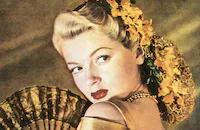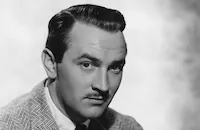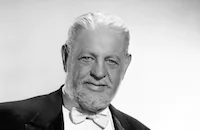Dancing Co-Ed

Brief Synopsis
Cast & Crew
S. Sylvan Simon
Lana Turner
Richard Carlson
Artie Shaw
Ann Rutherford
Lee Bowman
Film Details
Technical Specs

Synopsis
H. W. Workman, the mogul of Monarch Pictures, finds himself in a dilemma when Toddy Tobin, the wife and dancing partner of his star, Freddy Tobin, discovers that she is pregnant just before they are to begin production on a big budget musical. To save the picture, press agent Joe Drews formulates the brilliant scheme of selecting a new star through a college dance contest. To make certain that their new discovery can really dance, dancer Patty Marlow, the daughter of vaudevillian Pops Marlow, is planted in a small college to be the winner of the contest. Then, to make sure that Patty will be accepted in the halls of higher education, Joe orders his secretary Eve Greeley to take her entrance exams, and the pair enroll in Midwestern College. Trouble begins, however, when Pug Braddock, the editor of the campus paper, begins an investigation to determine if the contest is legitimate and Patty falls in love with both Pug and journalism. When Pug and Patty are threatened with expulsion for publishing scandalous pictures of the faculty, the president of the college sends for Patty's father, prompting Patty to confess the truth to Pug. Pug becomes incensed when Patty insists upon going through with the contest, and consequently, on the day of the competition, as an unsuspecting H. W. arrives to pick the winner, Pug arranges for several of his friends to kidnap Patty. Patty finally convinces Pug to allow her to return to the contest, but meanwhile, in her absence, Joe has substituted Eve to stall for time. All ends happily when H. W. selects Eve to be his new star and offers Pop a job as a dancing coach, while Pug proposes to Patty.

Director

S. Sylvan Simon
Cast

Lana Turner

Richard Carlson

Artie Shaw

Ann Rutherford

Lee Bowman

Thurston Hall

Leon Errol
Roscoe Karns
Mary Field

Walter Kingsford
Mary Beth Hughes

June Preisser

Monty Woolley
Chester Clute
Edythe Elliott
Benny Baker
Bert Moorhouse

Lee Phelps
Gwen Kenyon
Wayne "tiny" Whitt
Earl Seaman
June Gittelson
Celia Travers

Rand Brooks
Hal Le Seur
Maxine Conrad
Eddy Conrad
Jack Chapin
Philip Van Zandt
Hal Brazeale
John Gubbins
Laura Treadwell
Jim Dundee
Helen Deverell
Mavis Mims
John Wald
Ethelreda Leopold
Art Miles
David Oliver
Dora Clemant
Evelyn Woodbury
Johnny Day
Billy Lally
Edgar Caldwell
James Mcneill
Charles Thomas
Dick Winslow

Constance Keane
Barbara Bedford
Billy Bletcher
Minerva Urecal
Eugene Radovitch
Edna Mae Jones
Edward Arnold Jr.
Lynn Lewis
Maxine Marsh
Carolyn Frasher
Maxine Cook
John Dawson
Crew
Charles Dorian
Herbert Fields
Cedric Gibbons
Alfred Gilks
W. Donn Hayes
George King
Albert Mannheimer
Harry Mcafee
Edgar Selwyn
Artie Shaw
Douglas Shearer
David Snell
Walter Strohm
Dolly Tree
Edward Ward
Edwin B. Willis

Photo Collections
Film Details
Technical Specs

Articles
Dancing Co-Ed
He does a lot of it before we even see him, as the brassy growl of Shaw's theme song, "Nightmare," is heard over the opening credits. He's asked only to play himself, which he does with unforced ease (although not with as much geniality as Goodman in Hollywood Hotel in 1937), culminating in a campus concert at the end. Later, he complained about being asked to seem a cross between Rudy Vallee and Ben Bernie. It perhaps explains the somewhat sullen cast to his hunky, white dinner-jacketed look.
The formulaic collegiate plot, crossed with the MGM hey-kids-let's-do-a-show template perfected with Mickey Rooney and Judy Garland, isn't graced with any really memorable songs, but it's enlivened by a screenful of jitterbugging and a graceful dance routine unfurled by Ann Rutherford, until then best known as Mickey's loyal girlfriend, Polly, in the Andy Hardy movies.
The revelation here is Turner, the seventeen-year-old Idaho-born redhead who became a legend even before the lens cover came off the camera; she lived the Hollywood dream, having been discovered by Hollywood Reporter kingpin Billy Wilkinson, who moved her from behind the soda fountain at Schwab's drugstore to a Hollywood career that proved a mixed blessing. Turner was hardly ever regarded as anything but a sex symbol dished up by the Dream Factory, an image cemented by her reign as WW II pinup queen alongside Betty Grable and Rita Hayworth. Known as The Sweater Girl, her likeness was festooned across servicemen's gear ranging from foot lockers to bomber fuselages.
But here, in 1939, before her image became her prison, she reveals a flair for light comedy you can't help wishing Hollywood had made more of. In the tissue-thin plot, she's featured as the dancing daughter of an old Broadway vaudevillean (Leon Errol), positioned for her big movie break after the woman in a famous dance team becomes pregnant and her male partner needs a new dancing co-star quickly. To drum up interest among the collegiate demographic, fast-talking studio flack Roscoe Karns stages a phony contest rigged to culminate in Turner's hoofer being "discovered" after having been planted among the student body at a Midwest college.
It moves right along until the editor of the student newspaper an earnest Richard Carlson (the same Richard Carlson who rose to B-movie immortality in Creature from the Black Lagoon (1954) after It Came from Outer Space (1953), not to mention TV success as Commie-fighting Herbert Philbrick in I Led Three Lives). He uncovers the ruse and licks his lips over a big exposé. Or would, if he didn't find himself falling for Turner and licking his lips instead over the thought of romancing her. It's as if he's playing the Dick Powell role opposite Turner's Joan Blondell. Eleanor Powell was the original choice for the role, but when she proved unavailable, Turner was moved up from the ranks, a fact the script exploits by interpolating a line about the fictitious studio in the film being unable to land Powell or Ginger Rogers!
Predictable triteness ensues, and it can't be said that Sylvan Simon's direction is in any way sparkling or distinguished. But Dancing Co-Ed is agreeably watchable, buoyed by its collective good spirits, smart pacing and solid character work from such studio reliables as Errol, Thurston Hall as the blustering studio boss, Walter Kingsford as the harrumphing college president and Monty Woolley, reaching back into his real-life teaching days at Yale to play the lit prof here, dryly one-upping his students. Although its efficient packaging of Shaw, including a solo by drummer Buddy Rich, satisfied the bobby-soxers, Turner is the reason for seeing the film.
She's good-natured, a little rough around the edges, but likeably simpatico, with a charm arising from the fact that she's set apart from the collegiate stereotypes. So Blondell, yes, in her perky toughness and resilience, but also a hint of Carole Lombard. Her vibrant openness comes much closer to the working girl from Idaho she was than almost any of her other films allowed her to be, and it's not at all certain that her wholesomeness, leavened by its working-class unpretentiousness, wouldn't have outlasted her manufactured pre-Marilyn Monroe sex goddess stereotype, had her career gone in that direction.
Turner's good humor here, incidentally, is in marked contrast to the disillusionment and distaste with which she recalled her brief (four months, seventeen days) marriage to Shaw, a mismatch to which she was susceptible, she writes, because she had just learned that the man she loved, Hollywood lawyer Greg Bautzer, had been two-timing her with Joan Crawford. She and Shaw had little to do with one another during the filming of Dancing Co-Ed. But when he called her a year later, his timing couldn't have been better. At the end of their first date, spent on a beach and consisting mostly of Shaw talking and Turner listening, he chartered a plane and they flew to Las Vegas for a whirlwind elopement. It was her first marriage, his third (of eight), and its short duration was due in part to his taking on the role of Pygmalion to her Galatea, loading her down with books to improve her mind and insisting she play down her glamorous side with a more dowdy look. Thus began an unwanted love-hate relationship between Turner and the media. It culminated in 1958, when her daughter, Cheryl Crane, stabbed Turner's mobster lover, Johnny Stompanato, to death. The notoriety pumped up the box-office receipts of Turner's Peyton Place (1957), the scandal-mongering film of Grace Metalious's critically skewered but best-selling novel about small-town sexual shenanigans. Turner remained a star for decades, and a presence on the MGM lot, specializing in sexy femmes fatales. Dancing Co-Ed is where movies really began for her -- innocently enough and, apart from the Fred Astaire film, Second Chorus (1940), the following year, ended for Shaw.
Producer: Edgar Selwyn
Director: S. Sylvan Simon
Screenplay: Albert Mannheimer; Albert Treynor (story "The Dancing Coed"); Herbert Fields (treatment, uncredited)
Cinematography: Alfred Gilks
Art Direction: Cedric Gibbons
Music: David Snell, Edward Ward
Film Editing: W. Donn Hayes
Cast: Lana Turner (Patty Marlow), Richard Carlson (Michael 'Pug' Braddock), Artie Shaw (Himself), Ann Rutherford (Miss Eve Greeley), Lee Bowman (Freddy Tobin), Thurston Hall (Henry W. 'H.W.' Workman), Leon Errol (Sam 'Pops' Marlow), Roscoe Karns (Joe Drews).
BW-85m.
by Jay Carr
SOURCES:
New York Times review, Nov. 10, 1939
The Great Movie Stars: The Golden Years, by David Shipman, Crown, 1970
Lana: The Lady, the Legend, the Truth, by Lana Turner, Dutton, 1982
Artie Shaw biography at swingmusic.net
The Trouble with Cinderella: An Outline of Identity, by Artie Shaw, Farrar, Strauss & Young, 1952
IMDb

Dancing Co-Ed
Quotes
Trivia
Was originally planned as an Eleanor Powell movie, but studio executives decided to use it as a vehicle for Lana Turner.
Notes
According to a news item in Hollywood Reporter, this picture was to have featured Eleanor Powell until the studio decided to use it as a showcase for Lana Turner's talent.
















